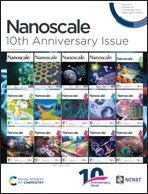Self-templated construction of 1D NiMo nanowires via a Li electrochemical tuning method for the hydrogen evolution reaction†
Abstract
NiMo based materials have been widely recognized as the most promising alternatives to noble Pt electrocatalysts used in alkaline electrolytes for the hydrogen evolution reaction. However, it is difficult to construct a nanostructure, especially 1D morphology, for NiMo materials via an electrochemical method. Herein, a novel Li electrochemical tuning method, for the first time, is introduced to synthesize 1D NiMo nanowires by insertion of lithium ions into parent NiMoO4 nanorods. The as-prepared NiMo catalyst exhibits high HER activity in 1 M KOH, in terms of low overpotential (73 mV) at a current density of 10 mA cm−2 and a small Tafel slope (37.2 mV dec−1) and charge transfer resistance (11.3 Ω). Furthermore, no decay in catalytic performance is observed for this material when it is operated at −0.125 V (vs. RHE) for 1250 min and a high Faraday efficiency (96%) is achieved. The high activity of NiMo is ascribed to the synergistic interplay between Ni and Mo and its unique nanostructure, which can expose more active sites and facilitate the mass transfer and hydrogen bubble release.

- This article is part of the themed collection: Nanoscale 10th Anniversary Special Issue


 Please wait while we load your content...
Please wait while we load your content...